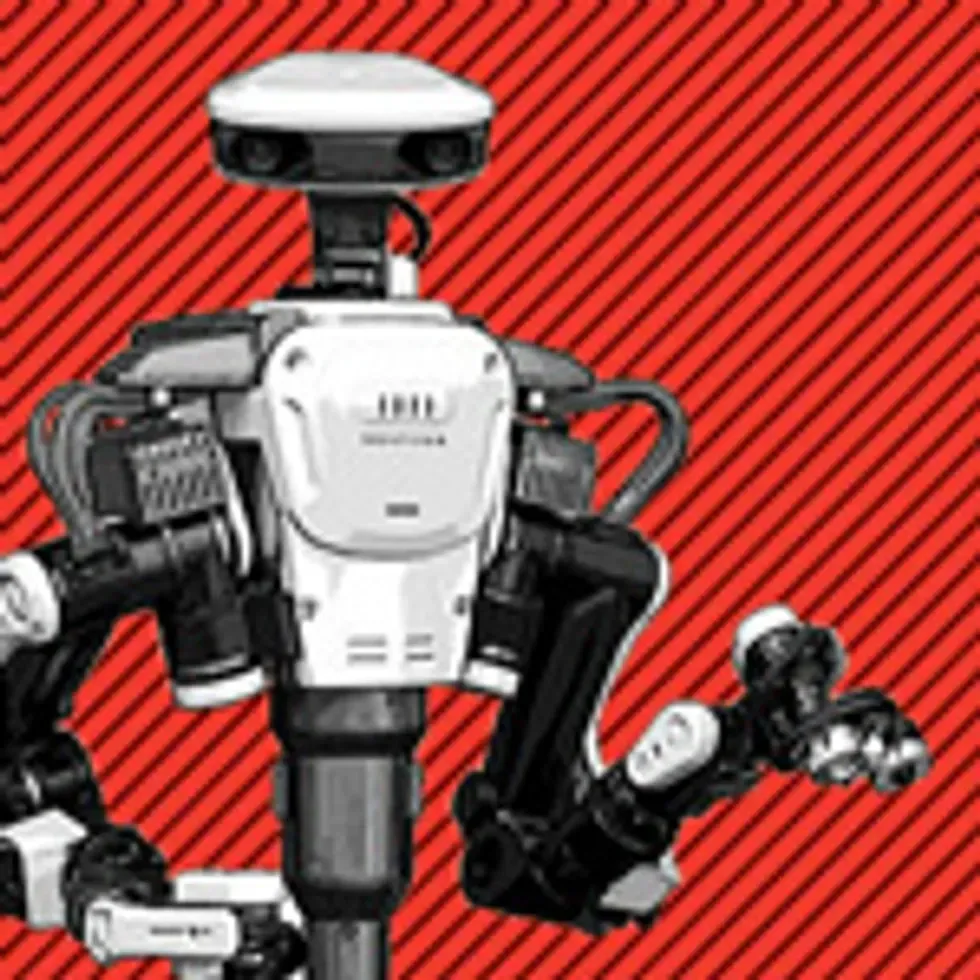How Rethink Robotics Built Its New Baxter Robot Worker
Rodney Brooks's new start-up wants to spark a factory revolution with a low-cost, user-friendly robot
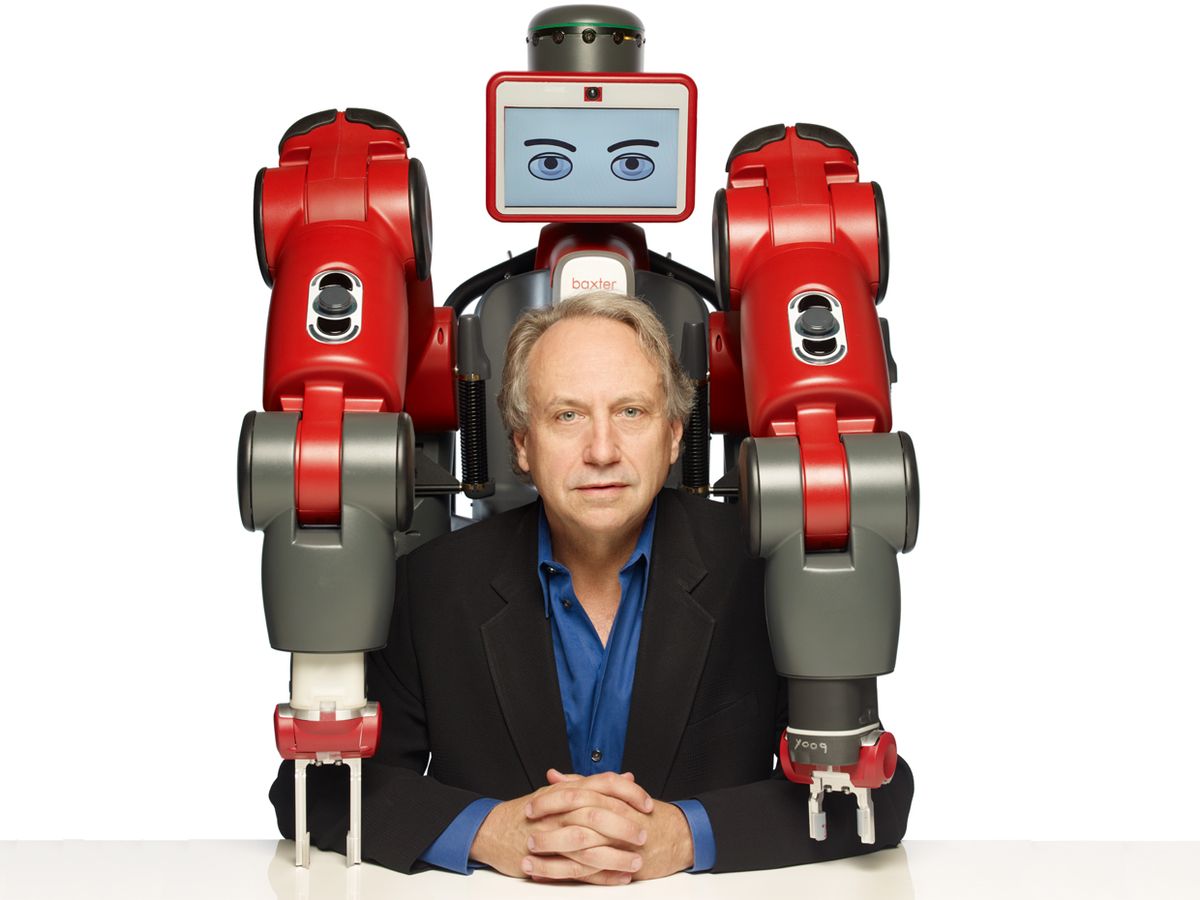
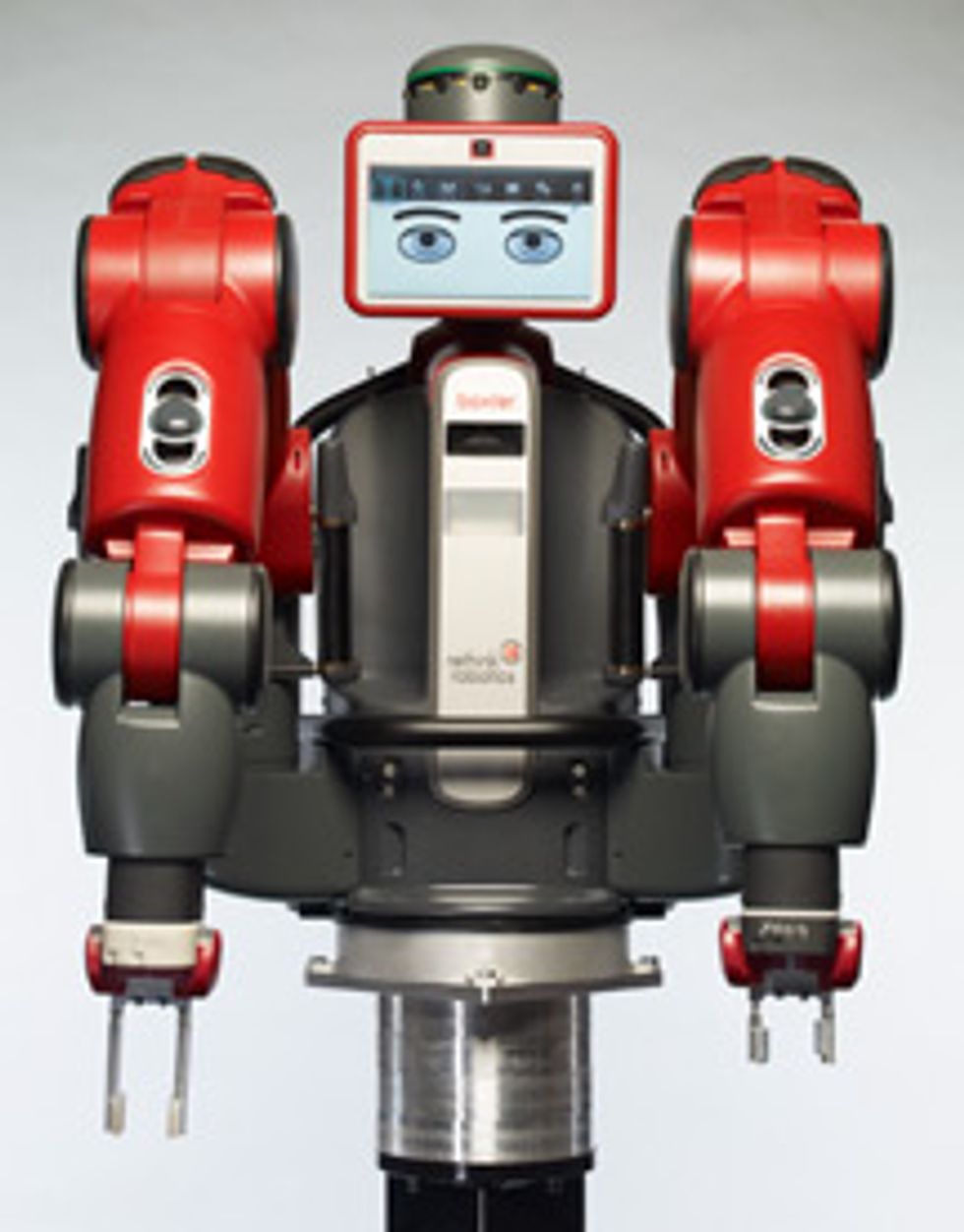
One robot methodically moves widget after widget onto a conveyor belt, the animated face on its LCD screen displaying an expression of quiet concentration. The task is mundane, but the robot is not: This is Baxter, the culmination of nearly five years of secretive development, based on the vision of Rodney Brooks, possibly the world’s most celebrated roboticist. Now founder, chairman, and CTO of Rethink Robotics, the company that built Baxter, Brooks has his sights set characteristically high: to unleash a revolution in manufacturing with a friendly faced factory robot.
With US $62 million in funding from top-tier investors such as Bezos Expeditions and Charles River Ventures, Rethink Robotics has been the subject of a great deal of interest and speculation since its founding in 2008. Like others who track robotics, we’d heard the rumors: Rethink was focusing on manufacturing; its robots would be so inexpensive every factory would be able to afford one; the robots would help make workers more efficient and American factories competitive again. But nobody knew exactly what the company was up to—or if they did, they weren’t talking. Rethink’s robot was one of the best-kept secrets in robotics, but that secret is about to be revealed with the exclusive demonstration we’re getting today in preparation for Baxter’s first shipments this month.
Brooks is clearly thrilled to show off his latest creation. When he gets particularly animated, his eyebrows arch high on his forehead and his hands gesticulate wildly. You almost expect sparks to jump from his fingertips. “This is pretty cool,” he says as he grabs a robot by its wrist. Baxter has thick, round arms, and you’d think they’d be heavy and rigid. But Brooks moves the arm around in a fluid motion, as if it were a weightless object. “When you hold the cuff, the robot goes into gravity-compensation, zero-force mode,” he says. His eyebrows shoot up. “It’s like the arm is essentially floating.”
This seemingly simple feature shows just one of the many ways in which Baxter is unlike any other industrial robot. With two arms, each with seven axes of motion—or degrees of freedom, in robotic parlance—and a reach similar to that of a human, Baxter is designed to take over those simple, dumb, mindless tasks that humans hate to perform because they’re so, well, robotic. Whereas traditional industrial robots perform one specific task with superhuman speed and precision, Baxter is neither particularly fast nor particularly precise. But it excels at just about any job that involves picking stuff up and putting it down somewhere else while simultaneously adapting to changes in its environment, like a misplaced part or a conveyor belt that suddenly changes speed.
What’s more, Baxter is designed to be inherently safe. With their fast, powerful motors and hefty limbs, industrial robots are typically kept fenced off from people. Baxter’s limited speed and lower weight—about 75 kilograms (165 pounds), or as much as an average adult man—mean that it can operate right alongside human workers. Brooks is so confident in this feature that he often puts his own body on the line: “I’ll just walk in and have this thing bash into my head, and it’s fine.”
There are two other major barriers to the adoption of industrial robots that Rethink wants to overcome: ease of use and cost. As for the first, Baxter doesn’t rely on custom programming to perform new tasks. Once it’s wheeled into place and plugged into an ordinary power outlet, a person with no robotics experience can program a new task simply by moving Baxter’s arms around and following prompts on its user-friendly interface (which doubles as the robot’s face). And while a traditional two-armed robot, including sensors and programming, will typically set you back hundreds of thousands of dollars, Baxter costs just $22 000. To achieve that, Rethink designed the robot from scratch. Underneath Baxter’s plastic exterior lie thousands of ingeniously engineered parts and materials that enable the robot to do what it does for the cost of a midsize car.
All these features make Baxter a potentially disruptive force in an industry ripe for disruption. Today, large suppliers and their large customers dominate industrial robotics. But almost any manufacturer can afford a Baxter (or two). In the United States alone, there are roughly 300 000 small and medium-size manufacturers, Brooks points out. So it’s not inconceivable that Rethink could make humanoid robots a normal part of the manufacturing process for businesses of all sizes. And by improving the efficiency of human employees, it could make making things in the industrialized world just as cost effective as making them in the developing world.
Building robots for these small and medium-size companies “is a fantastic opportunity,” says Henrik I. Christensen, a professor of robotics at the Georgia Institute of Technology, in Atlanta, who’s an expert in industrial automation. (He has no ties to Rethink.) There are many tasks, he says, that don’t require the speed and precision of today’s industrial robots, and these tasks are begging to be automated.
But Rethink’s robot invasion faces many challenges. The biggest by far will be selling the robot. For many folks, robots still evoke mental images of Robby the Robot, or worse, the Terminator. Rethink has to convince business owners that Baxter is not a gimmick, that it really can boost productivity. Brooks isn’t worried. He acknowledges that, in the beginning, Baxter will perform only a limited number of tasks. But as Rethink continues to upgrade the robot—especially its software—Baxter’s full potential will become evident. And then, Brooks predicts, his new robot will “sell like hotcakes.”
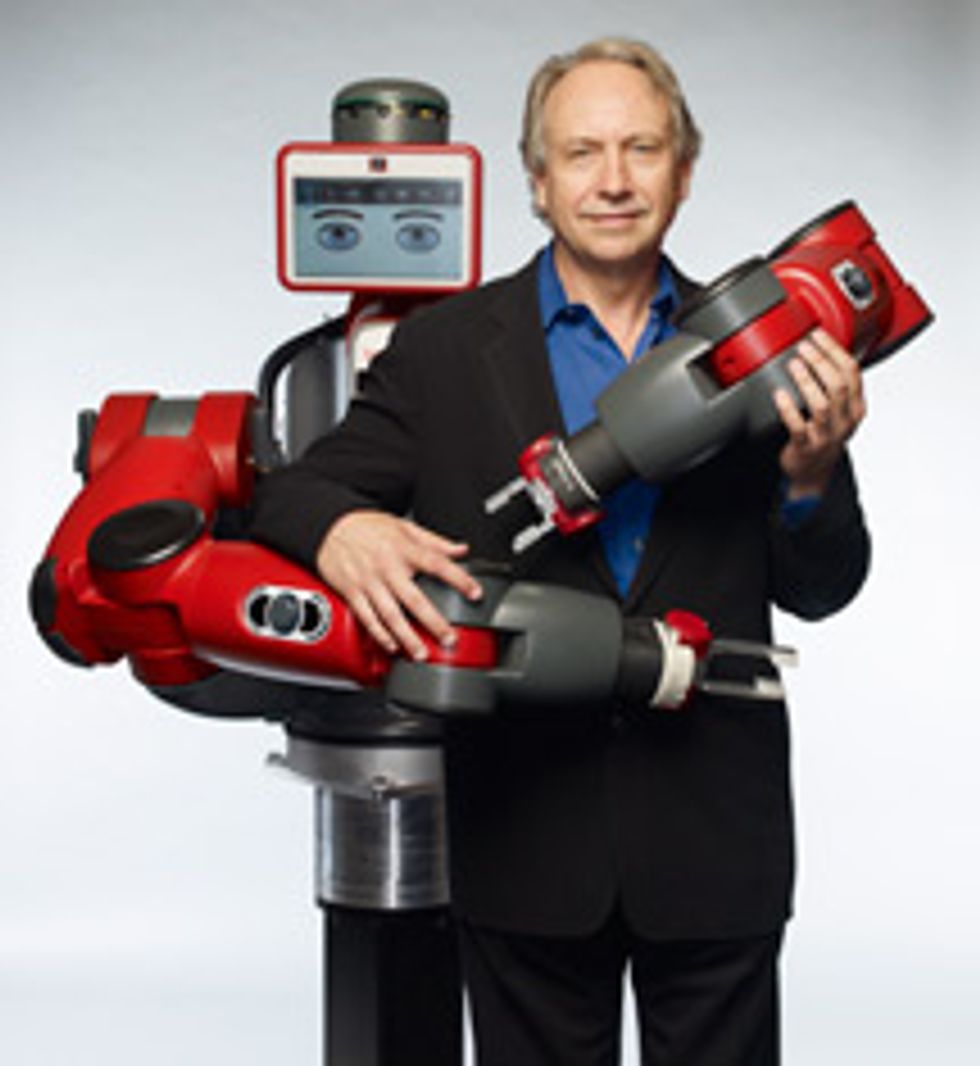
Once we get to his office, Brooks relaxes on a couch. Dressed in a button-down shirt, jeans, and red-and-blue argyle socks, he’s surrounded by relics of his robotics past. One framed picture shows Genghis, a six-legged robot he built at MIT in the late 1980s, which could crawl and climb over obstacles with a remarkable, insect-like gait. Contrary to the conventional wisdom of the time, Genghis required very little programming to produce its complex behavior. It was just one of many bold, counterintuitive results that surprised the community and helped establish Brooks’s reputation as “the bad boy of robotics.”
In addition to his notable academic career, Brooks and two of his students, Colin Angle and Helen Greiner, founded iRobot in 1990. The start-up broke ground in two distinct areas: its Roomba vacuum cleaning robot, which became a runaway hit in the consumer market, and its PackBot military robot, used in Iraq and Afghanistan to scout for improvised explosive devices. With these accomplishments under his belt, Brooks could have retired comfortably. Instead, he decided to phase out his involvement with iRobot, gave up his tenured position at MIT, and founded Heartland Robotics, which recently rethought its name and became Rethink.
Brooks’s vision for Rethink can be traced back to the time he spent in China supervising the manufacture of iRobot products. “I realized that [outsourcing manufacturing to China] wasn’t sustainable, because once the cost of Chinese labor starts to go up, the appeal of doing a product there starts to go away,” he says. He concluded that a fairly simple robot could do lots of those tasks, like basic material handling, packing and unpacking boxes, and polishing and grinding. Brooks’s second realization was that the same advances in processors and sensors that were making PCs and smartphones better and cheaper would benefit robots, too.
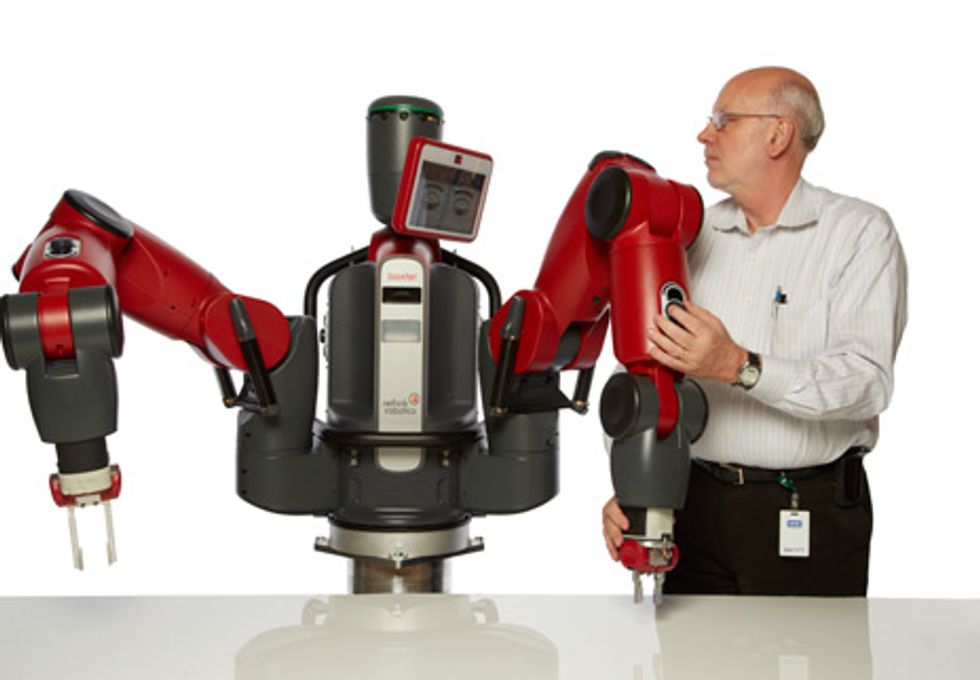
As the complexity of the robot has increased, keeping the cost down has been a constant struggle. The engineers found creative ways to work with less expensive components, which often meant designing parts out of cheaper materials. (At one point they attempted to build the entire arm, including the gear systems, out of plastic, but that didn’t pan out.) And by working closely with local manufacturers, they were able to get the parts they needed more cheaply and without compromising quality.
Brooks picks up a set of gears and waves it around. A Pennsylvania shop made them, he says, using a metallurgical process involving pressed powdered metal, which ended up being only about a fifth of the cost of traditional gears. The robot has hundreds of parts like these, and so the savings add up. Rethink used this design-for-manufacturing approach for as many parts as possible, eventually procuring 75 percent of them in the United States—a fact that Baxter advertises with a big “Made in U.S.A.” sign stamped on its back.
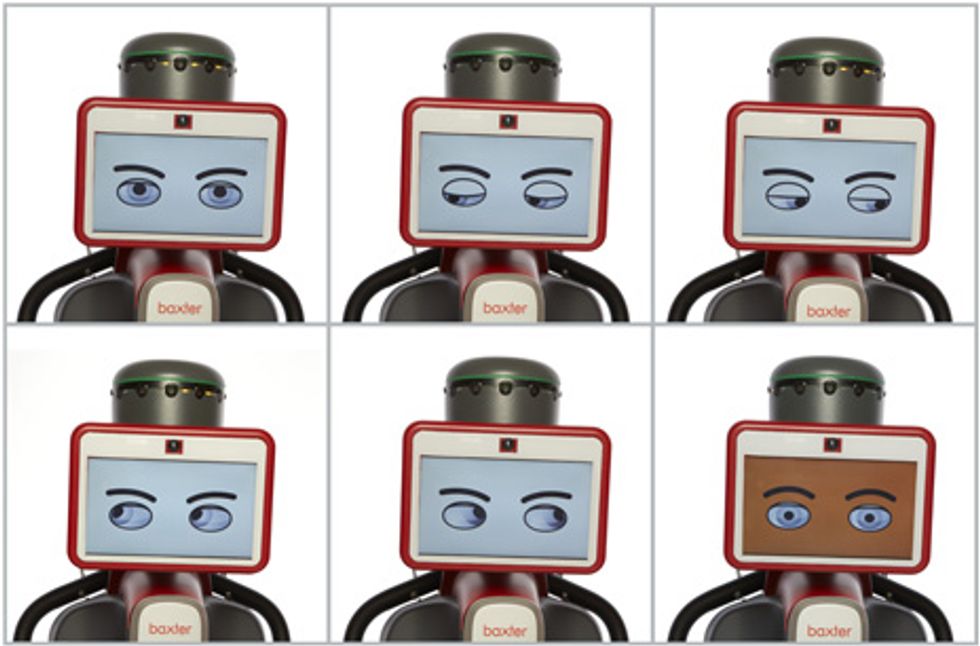
This all gets to one of Baxter’s key features: compliance. A robot is said to be compliant when it’s not completely rigid and when it can sense and control the forces it applies to things. “If you want a robot that’s going to deal with an unstructured environment, it can’t be stiff,” says Matthew Williamson, Rethink’s director of technology development. “You need compliance.”
This idea of compliance is embodied, as it were, in Baxter’s arms, which contain a mechanism called a series elastic actuator. The concept was invented and patented in the mid-1990s by then–MIT researchers Gill Pratt (now a program manager at the U.S. Defense Advanced Research Projects Agency) and Williamson. As Williamson explains, in a traditional actuator a motor drives a gearbox, which in turn drives a joint—say, the elbow of a robot arm. The motor, gearbox, and joint are rigidly attached to one another. What you get is speed and precision, which are great for a welding robot at a car plant but not for a robot that will operate around humans. If you try to hold the elbow when it’s turning, for example, a traditional robot won’t feel your hand and so will just keep moving.
In a series elastic actuator, however, the motor and gearbox drive a spring, and it’s the spring that drives the joint. The spring makes the actuator much less stiff and also lets the device measure forces. That’s because the force on the joint can be calculated from the deflection of the spring, as famously stated by Hooke’s Law of elasticity. And if the control system knows how much force is being applied on each joint, the robot can use that as a feedback signal to react accordingly. So when you grab Baxter’s elbow, it senses the added force and slows down, and it can even follow your motions—the “gravity-compensation, zero-force mode” that Brooks had demonstrated earlier that day.
ARM WRESTLING
Baxter isn’t the only new robot vying for the manufacturing market. Here are some of the other contenders. (Actual prices depend on model and configuration.)
ABB

Photo: ABB
(Zurich)
Unveiled a dual-arm concept robot designed for high-precision assembly applications, in 2011.
Price: not available
ADEPT TECHNOLOGY
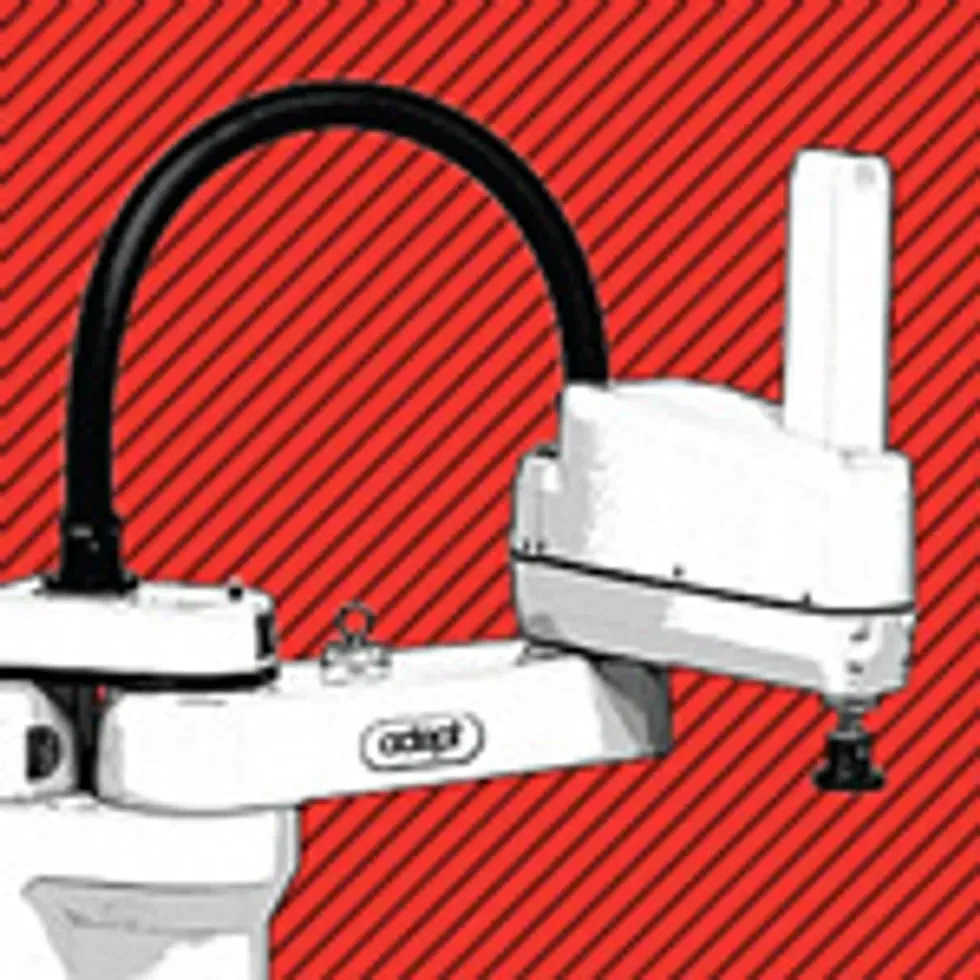
Photo: Adept Technology
(Pleasanton, Calif.)
Offers a variety of SCARA, six-axis, and parallel
robots for manufacturing.
Price: not available
BARRETT TECHNOLOGY
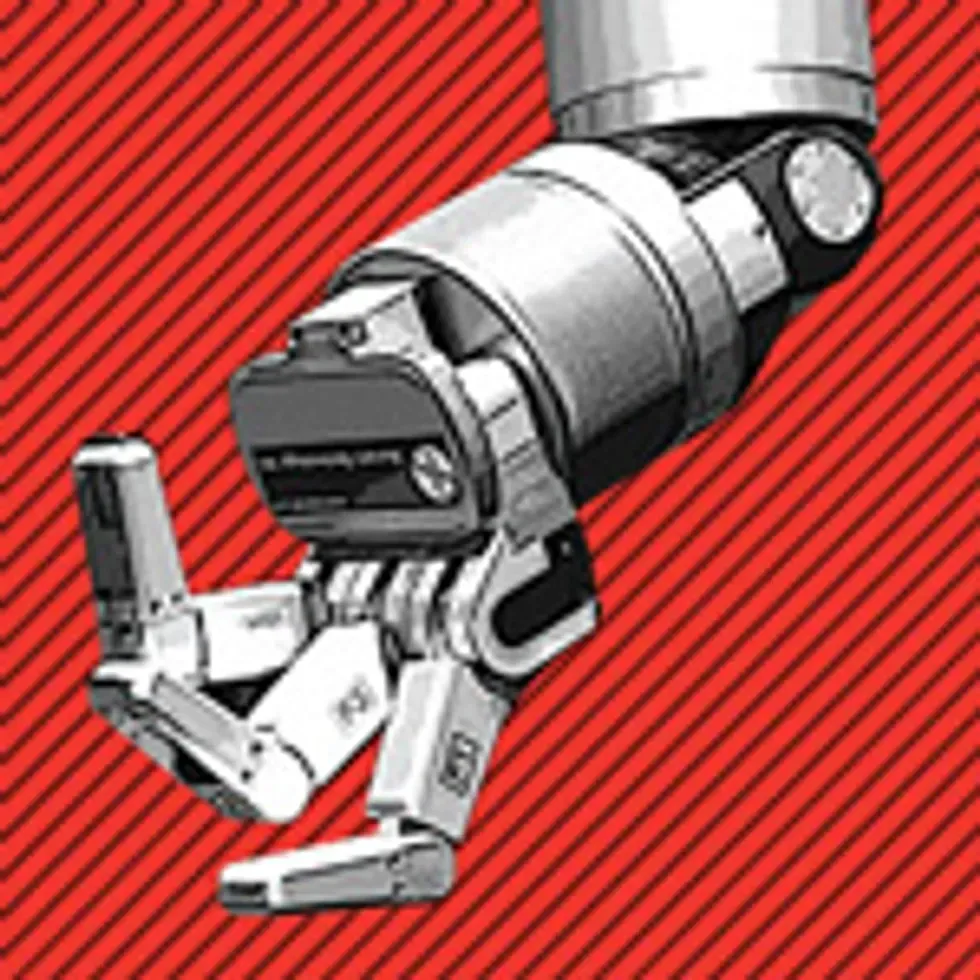
Photo: Barrett Technology
(Cambridge, Mass)
Its main product is the WAM, a cable-driven seven-degrees-of-freedom fully compliant arm.
Price: $100 000
(Tokyo)
Its Nextage robot has two
six-degrees-of-freedom arms designed for assembly.
Price: $85 000-$100 000
REDWOOD ROBOTICS
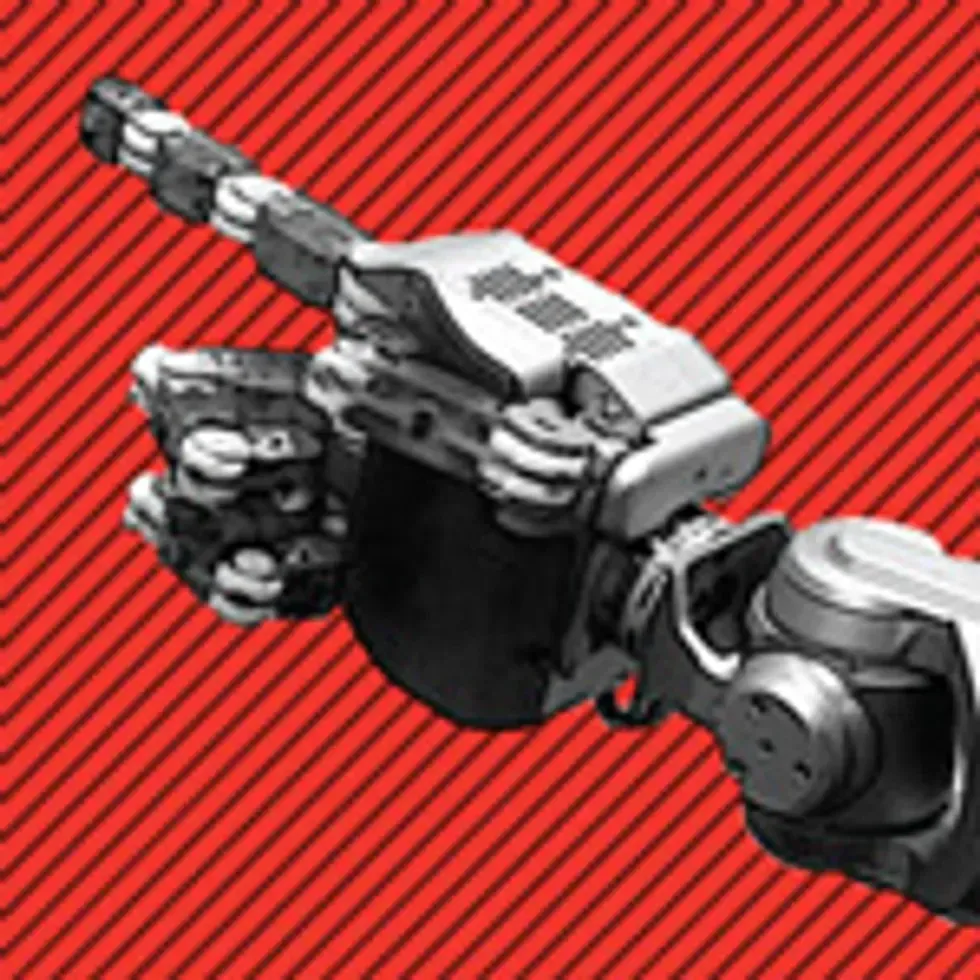
Photo: Meka Robotics
(Menlo Park, Calif.)
Founded by Meka Robotics and others, it’s creating
a robot for flexible manufacturing.
Price: not available
UNIVERSAL ROBOTS
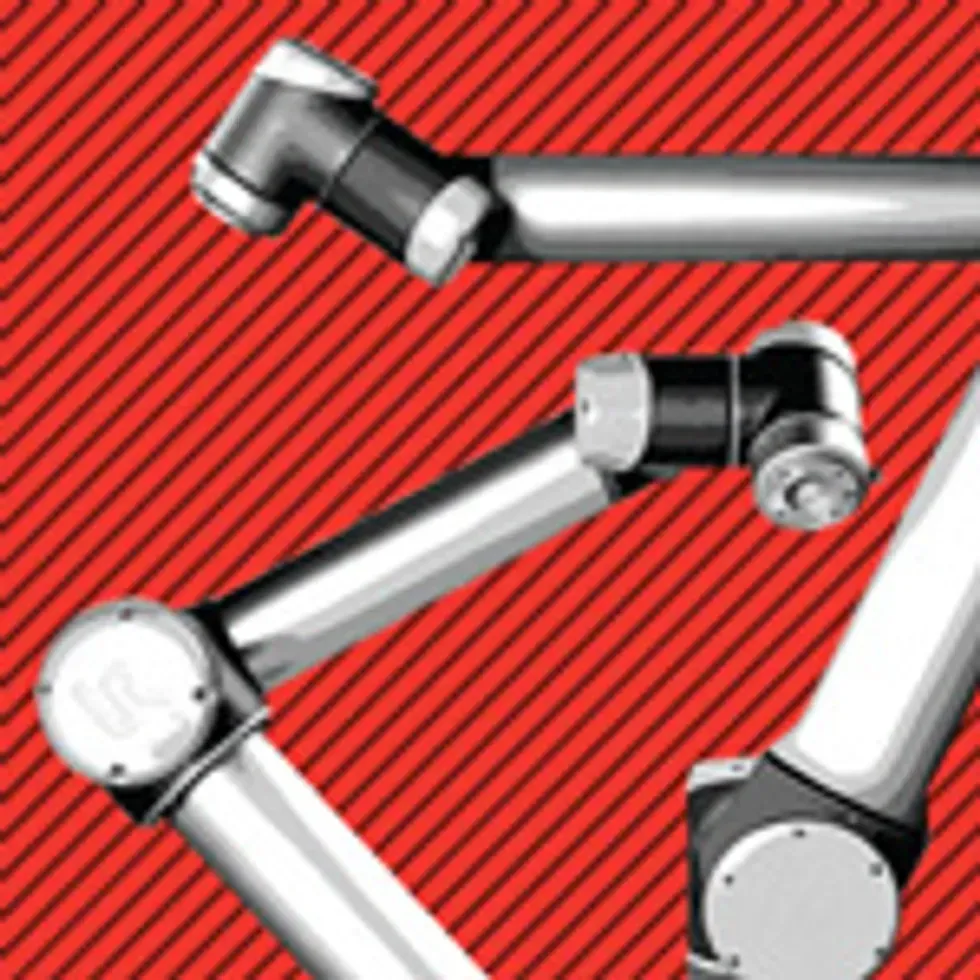
Photo: Universal Robots
(Odense,Denmark)
Offers the UR-5 and UR-10 arms, designed to be
affordable, safe, and easy to program.
Price: €20 000
As sophisticated as Baxter’s hardware is, the “real breakthrough,” according to Brooks, is “the way you program the robot.” Using the word program to describe how you teach Baxter new tasks is perhaps overcomplicating things: It isn’t so much programmed as it is simply shown what to do.
Programming a traditional robot requires writing code or running it through its paces by pushing buttons on a handheld control box called a teach pendant. It’s not difficult to use a pendant, but it’s time-consuming, with certain tasks requiring hours of tedious button pushing.
To show Baxter how to take an object out of a box and put it on a conveyor belt, you start by grabbing the robot by the wrist to get its attention. Baxter will stop whatever it’s doing and look at you with the calm, confident eyes displayed on its LCD. You then move the arm over to the box and use buttons and a knob on the arm to navigate a series of menus on the LCD, telling the robot to use its vision to find the object. Finally, you move the arm over to the conveyor and push some more buttons to let Baxter know that this is where you want the object dropped off. Baxter even nods its head, as if to say, “I get it.” Pressing the “play” button makes the robot execute the task on its own.
Despite Baxter’s ease of use, how will factory owners and workers react when the machine gets rolled onto their shop floor? To find out, Rethink sent Baxter on a series of field tests, asking the folks who’ll be using (and purchasing) the robot for feedback. One of them is Chris Budnick, president of Vanguard Plastics Corp., a 30-employee plastics manufacturer in Southington, Conn. Budnick met Baxter during a trial early this year. “They’re really onto something with the user interface,” he says. He programmed the robot to pick up a part from a conveyor belt and place it on a table in less than 10 minutes. He had some quibbles, though. The Baxter prototype he saw was a little too big and slow, he says, and the robot took too long to find and grab the parts. That said, he wouldn’t think twice about buying a Baxter, estimating payback in about a year.
Rethink says Baxter will get faster—and smarter. For example, it can adapt on its own to changes in position and lighting and to differently shaped objects. It’s also easy to reprogram the robot: You simply get its attention and run it through the new steps. Try to do that with a traditional robot, says Mitch Rosenberg, Rethink’s vice president for marketing and product management, and “you’d have to hire a team of software and hardware guys.”
Part of Rethink’s plan to revolutionize manufacturing involves a business model that hasn’t yet been applied to robotics but is now commonplace in the computer world. Early in the evolution of the computer, both the hardware and software were expensive and customized. The true PC revolution came when users were able to buy a standard platform that they could expand and upgrade to fit their specific needs.
And that’s what Rethink is offering: future potential, embodied in the promise of frequent software upgrades that will give Baxter the ability to perform entirely new tasks. Rosenberg puts it this way: “The day you buy the robot is the day that it’ll perform the least well. Over time, your investment will become more and more valuable because the software will become more and more valuable.”
To that end, the company is planning to release a software development kit, or SDK, next year that will let others delve into Baxter’s guts and modify its capabilities. There will also be a variety of third-party grippers for handling parts with different shapes. What’s more, Baxter is relying on open platforms. It currently runs Linux and ROS (short for robot operating system), a software platform that’s becoming increasingly popular within the robotics community. Rethink is now looking for people to develop a ROS-compatible SDK and is considering eventually supporting a completely open-source framework for Baxter.
But what’s going to most dramatically set the robot apart is the $22 000 price tag (which includes a year of software updates and the warranty). “We want to have a product that’s easy for a customer to try,” says president and CEO Scott Eckert. “The whole notion of trial doesn’t really exist in the traditional robotics market. You don’t try traditional robots: You do an exhaustive amount of analysis and you implement and go. Our price point allows you to just go ahead and try it and see what happens.” The company is confidently expecting more orders than it can fill after it starts shipping robots this month. A production software release is planned for January. Looking further ahead, Rethink will continue developing Baxter’s software to add more capabilities, and eventually it’ll release new hardware platforms, says Eckert.
Even so, the company is starting to feel pressure from the competition. Swiss-Swedish giant ABB has developed a dual-arm prototype, reportedly for assembly applications. Japanese firm Kawada Industries has a similar robot named Nextage. They might not cost as little as Baxter, but they will likely be able to perform high-precision tasks that Baxter can’t do, like assembling electronics boards, another potentially huge market for robotic automation. Baxter isn’t going to make your next iPhone, but these other robots might.
Other start-ups are also looking to enter the low-cost robotics market. A Silicon Valley company called Redwood Robotics is working on a manipulator that may become a direct competitor of Baxter. And Universal Robots, a Danish company, has a compact and compliant robot arm that sells for about €20 000 and is now used in a dozen countries in Europe and Asia. “Our robot is like a tool that people buy and use without help from an expert,” says Universal Robots cofounder and chief technology officer Esben Østergaard. The concept sounds very similar to what Rethink proposes for Baxter. Østergaard says his company has already shipped robots to the United States, so Baxter is “not going to be the first robot to enter this new market.”
Another challenge Rethink will have to face is the perennial question, Will the robot take people’s jobs? Some people see automation as a force that needs to be checked, and not even a friendly faced robot will make them warm up to the idea of pushing even more automation into factories.
To be clear, nobody at Rethink believes that armies of Baxters are going to take jobs away from humans. They may shift jobs away from the developing world if U.S. and European manufacturers bring production back home, Brooks says, but the robots are not designed to replace workers. “The robot can’t do the full job of any one person, but it can do the simple cases of the simple tasks,” he says. “So let the person do the stuff that they’re better at, which makes the job more challenging and more interesting than some totally mindless thing.”
Brooks has attended some of the field tests to see how potential customers interact with the robots. He says that when they bring Baxter onto a factory floor, some workers look puzzled, while others just laugh at the machine. But after they use Baxter for a while, people realize how the robot can help them. “And then something interesting happens,” Brooks says, his eyebrows rising. “People sort of personify the robot. They say, ‘It’s my buddy!’ ”
This article originally appeared in print as “The Rise of the Robot Worker.”
